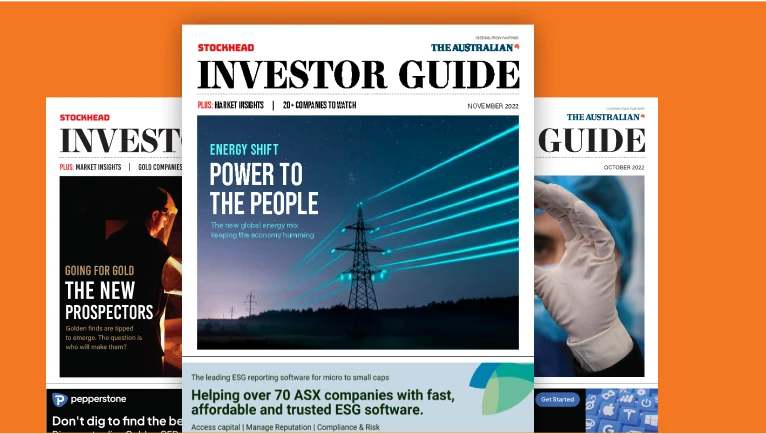Gold outshines gas as precious metal props up Aussie exports

Gold's in line to take the silver medal when it comes to Aussie mineral exports, outpacing LNG. Pic: Getty Images
- Gold will beat LNG to become Australia’s second biggest mineral export in 2025-26, according to Canberra number crunchers
- Soaring price of bullion will help shield country as prices for bulks and energy products decline
- Critical minerals taking to rebound as manganese and rare earths production expands
Gold will outpace LNG to become Australia’s second most valuable export this financial year as a staggering shift in the global economic order puts bullion front and centre of the next mining boom.
Figures from Canberra’s chief forecaster, the Department of Industry, Science and Resources’ Office of the Chief Economist, show sales of gold bars will net $60 billion for the Aussie economy this year, a staggering $12bn YoY gain and tripling in just seven years. At least that’s the word from Tuesday’s latest Resources and Energy Quarterly.
That’s all driven by price, with Aussie denominated gold briefly fetching A$6000/oz on Tuesday morning, with volumes marginally declining over the past decade.
Booming gold prices are expected to ramp up gold production as new mines come online, from 293t in 2024-25 to 369t in 2026-27, though that’s predicated on a fanciful timeline that has Northern Star Resources’ (ASX:NST) Hemi gold mine operational by the end of 2026 and contributing 17t.
A final investment decision is not expected until at least the end of this year for the +500,000ozpa project with regulatory approvals still in the works.
But it could well be argued the office’s predictions on price are too timid.
Analysts tip gold averaging US$3285/oz in 2025, US$3222/oz in 2026 and US$3259/oz in 2027. Gold has already threatened US$4000/oz, with some analysts now tipping US$4500/oz before the end of 2027.
What isn’t in doubt is that gold is covering for the declining value of Australia’s bulk and energy sales.
Iron ore export earnings are forecast to decline from $116bn in 2024-25 to $113bn in 2025-26 and $103bn in 2026-27, while the LNG take will slip from $65bn to $54bn and $48bn, respectively, met coal will drop from $39bn to $37bn through the outlook period and thermal from $32bn to $26bn.
That would see Aussie mining and energy export earnings, which topped $466bn in 2022-23, fall from $375bn in 2024-25 to $369bn this year and $354bn in 2026-27.
Demand centre shifts
While China has historically been Australia’s key trading partner – and still very much is in iron ore, accounting for 85% of earnings for our biggest export – some trade is beginning to shift to the West amid a brewing trade war.
The – unrealised – threat of tariffs against precious metals helped turn the US into a major buying hub for bullion in 2024-25.
It shot up from just $1.7bn of Aussie gold purchases in 2023-24 to $13.4bn in 2024-25, making the Seppos our biggest gold market.
Sales to Hong Kong fell from $11.2bn to $5.9bn and to mainland China from $5.1bn to $2.3bn.
Gold purchases from the UK also surged from $3.5bn to $11bn, and to unspecified markets from $5.2bn to $17.6bn, though transparency is impacted by confidentiality restrictions.
Critical minerals exports meanwhile – excluding specifically covered commodities like copper, nickel and lithium – are expected to lift from $2bn in 2024-25 to $5bn from 2026-27.
That is largely due to the recovery from a cyclone of South32 and Anglo American’s GEMCO manganese mine in the Northern Territory, growing rare earth production from Lynas (ASX:LYC) and the start of antimony exports from Larvotto Resources’ (ASX:LRV) Hillgrove mine in 2026.
Earnings have been revised up largely due to a 218% lift in rare earth export earnings anticipated in 2026-27 to $671m.
Gold’s strength apparent
While Canberra may be a little mild on how high gold prices will stay (understandable, given government departments have bottom lines to protect and numbers to massage), analysts have been adjusting their forecasts higher.
Morningstar’s Jon Mills now sees gold averaging US$3700/oz from 2025-2027 based on the futures curve, up from US$3450/oz previously.
That’s still below spot, but follows the trend of analysts rebasing gold prices higher.
Interestingly, Morningstar still sees gold returning to supply demand fundamentals, calling a midcycle price of US$2000/oz from 2029 based on the marginal cost of production.
It’s hard to see from this vantage point. Morningstar now considers a host of gold names ‘materially overvalued’, not a point generally shared by investment bank analysts, more cavalier though they may be.
On the miners’ side has been the release of early numbers from the first quarter of the financial year which have felt strangely good.
The typical cycle is that the September quarter is a write-off – miners have a habit of getting things like exploration, shutdowns and capital spend out of the way early so they can run for their targets in the third and fourth quarters.
But goldies have eerily impressed early doors.
Greatland Resources (ASX:GGP) was close to 10% higher, putting controversy around its re-stated FY26 guidance behind it with a beat on both gold and copper production in the September quarter.
The Telfer gold mine owner produced 80,900oz gold and 3400t copper (around 20% and 30% higher than analyst expectations respectively). Canaccord Genuity’s Alex Bedwany said Greatland’s $750m net cash position was already well ahead of its half year estimate of $658m with AISC for the quarter expected to land at the lower end of its $2400-2800/oz full year guidance range.
The key feas study on its Havieron development, the long term engine room of Telfer, is expected later this year.
Bellevue Gold (ASX:BGL) also eased operational concerns, pouring close to 30,000oz in the September quarter, ahead of the Northern Goldfields mine’s internal budget. Mined grades of 3.2g/t, well below reserve, are expected to increase as the year goes on, with BGL chasing 130-150,000oz for FY26.
Free cash flow of $33m enabled BGL to reduce its forward edges, clearing 9500oz due for delivery in the December and March quarters. The hedge book is one of the big overhangs on the miner, which also disappointed investors earlier this year by walking back long-term plans to grow the Bellevue mine to +250,000ozpa from 2029.
Its new long-term target is ~190,000ozpa.
Regis Resources (ASX:RRL) also impressed with its June quarter numbers, producing 90,400oz, well within its 350-380,000oz run rate for FY2026.
RRL bolstered its cash and bullion pile by $158m to $675m as of September 30.
The minor disappointment was Tropicana. Regis’ 30% share in the AngloGold Ashanti run mine clocked in at 31,900oz, running at a rate just shy of its 130-140,000oz (30% basis) full year guidance, and slightly below consensus.
Elsewhere there were board movements and corporate activity afoot. Former Northern Star Resources (ASX:NST) man Brad Valiukas stepped up to become managing director of Tasmanian gold producer Kaiser Reef (ASX:KAU), replacing Jonathan Downes who has signed on at exploration minnow Dundas Minerals (ASX:DUN).
And Capricorn Metals (ASX:CMM) has been enticed to lift its bid for Warriedar Resources (ASX:WA8) from 1 for 62 to 1 for 52.75 as it aims to get hold outs onside for the scheme transaction.
The deal would see Capricorn swallow WA8, which holds gold and antimony deposits near its under development Mt Gibson gold mine.
The offer now stands at the equivalent of 26c a share, a 24% premium to the last WA8 price of 21c, with Warriedar stock rising 16.67% on Tuesday to 24c.
Related Topics

UNLOCK INSIGHTS
Discover the untold stories of emerging ASX stocks.
Daily news and expert analysis, it's free to subscribe.
By proceeding, you confirm you understand that we handle personal information in accordance with our Privacy Policy.








